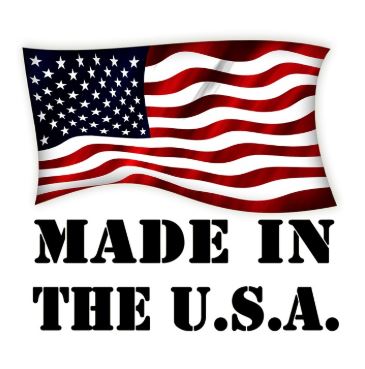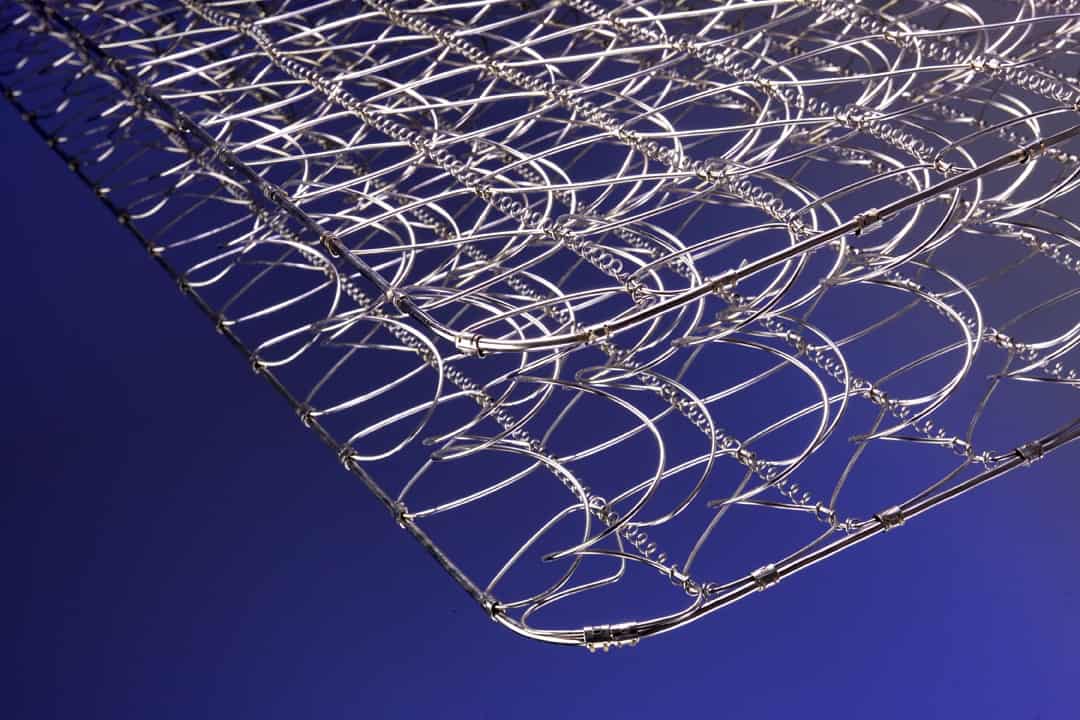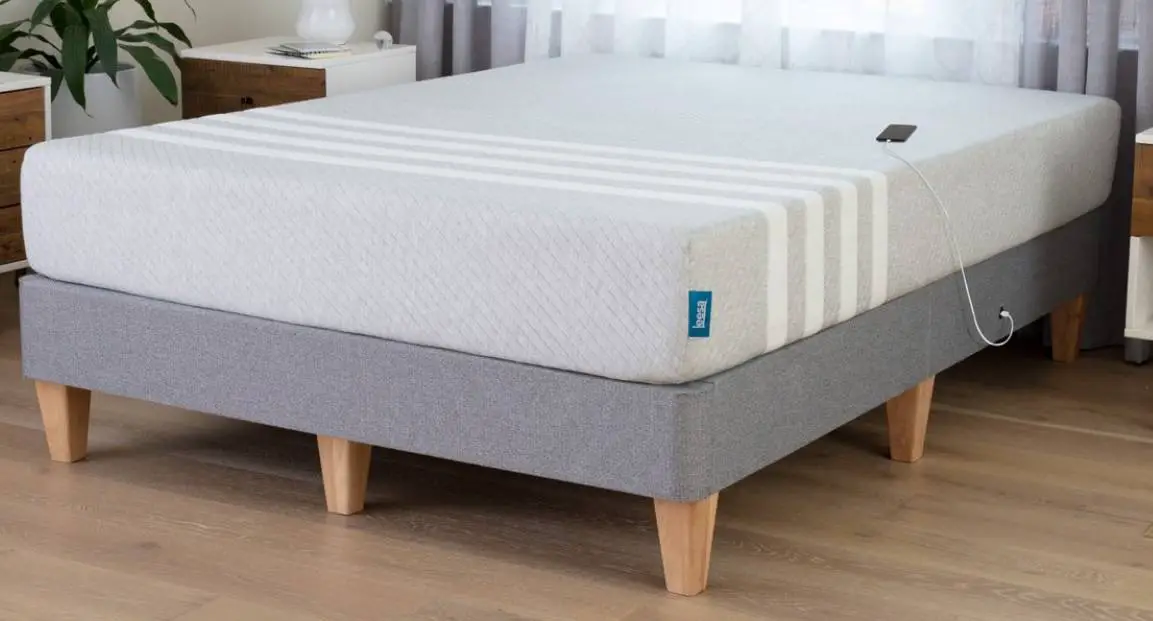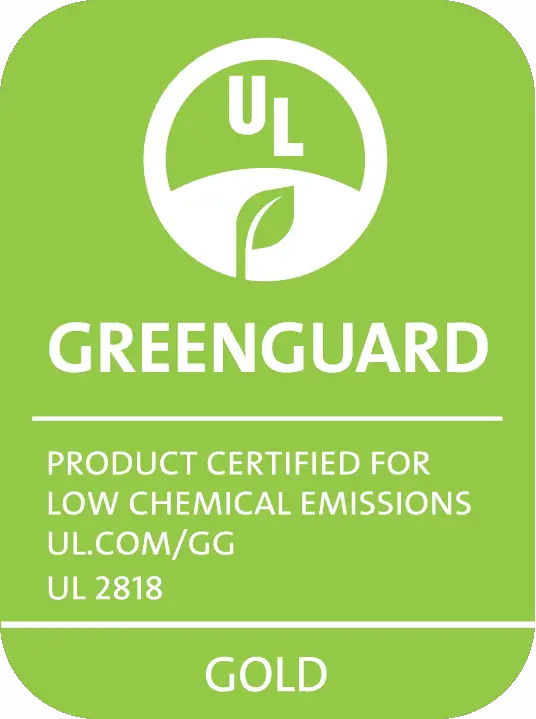Have you ever wondered from where the mattress materials (foam, cotton, or springs) in your mattress come?
Are they sourced locally, or are they imported from China and does it matter?
In this post, we explain where most mattress companies source their materials and the difference it makes in mattress quality.
Does ‘Made In America' Mean Anything, Anymore?

A few years ago, before bed-in-a-box mattresses became popular, most mattress manufacturers sourced their products from China and other countries where manufacturing cost is low.
Most legacy mattress makers still do. But a growing number of companies have shifted to manufacturing their products locally, led by direct-to-consumer mattress brands like Casper and Leesa.
The main reason for this shift is to respond to market demand.
According to several polls, Americans want more ‘Made in America’ products even if they cost slightly more.
Most people cite preserving jobs, supporting local companies, quality issues, safety concerns, and environmental protection as their biggest reasons for buying American-made products.
But what does ‘Made in America’ exactly mean?
That depends on the company’s definition. Since there are no legal standards for putting that label on a mattress, companies can use it as they please.
Many mattresses with that label are made in America, and materials like foam and springs are sourced locally as well.
But other uses of that label are misleading. The mattress may have been assembled in the US, but the materials are sourced from other countries.
A good example is Casper. Mattresses are made in the US, but they get the components from abroad.
If you want a genuine ‘Made in America’ mattress, do your due diligence. Check where the company gets its materials and where the mattresses are assembled.
How Most Mattresses Are Made Today

The earliest beds were made from a variety of natural materials like horsehair, straw, or feathers.
In the early 20th century, innerspring mattresses were invented. They became hugely popular thanks to their comfort, support, and durability.
Even today, innerspring mattresses are still highly popular.
But there are far more varieties than there were several decades ago. Memory foam beds have become especially popular because they are affordable yet very comfortable.
Most mattresses today use synthetic materials like memory foam and synthetic latex. Most also feature a multi-layer design with different materials in each layer.
The popular innerspring mattresses have also evolved.
Pocket coils are now widely used instead of Bonnell and Continous coils.
Additionally, the coil layer is combined with multiple layers of foams both at the top and below it to increase comfort, support, and longevity.
Direct to Consumer
Perhaps the biggest change that has occurred in the mattress industry is how mattresses reach customers.
With a traditional supply chain, mattresses start at the factory and pass through several intermediaries before reaching retail stores.
By the time you go to the store to pick a mattress, the price has gone up to cater for profit margins of all the intermediaries. Costs associated with transport, warehousing and stocking are also passed onto you.
Starting around 2010, companies like Saatva followed Tuft and Needle and later Casper changed the playbook.
They made mattresses in a factory and delivered them straight to customers. Most of these direct to consumer companies have no stores or warehouses. They sell their mattresses online.
This has drastically cut down on costs, savings that have been passed to customers.
Today, you can get a premium quality mattress for a fraction of the cost of a store-bought mattress with the added benefits of a long warranty (at least ten years) and a log in-home trial period.
Common Materials Used in Mattress Manufacturing

The materials used in a mattress determine its comfort, longevity, and price.
An innerspring mattress feels markedly different from a memory foam mattress. A latex mattress sleeps differently from a poly foam mattress.
Here are the most common materials that makeup mattresses.
Memory Foam
Also referred to as viscoelastic foam, memory foam is one of the most common materials.
It is known for its ability to mold around the body and recover its shape when you wake up. That’s why memory foam mattresses are often recommended for people with back pain and joint aches.
The main downside of memory foam is that it retains heat. It can get uncomfortably warm at night.
Some companies add cooling gel to the foam to dissipate the heat more efficiently. Others perforate the foam to improve airflow.
Some memory foam mattresses feature a cool latex foam layer on top.
Latex Foam
Latex foam mattresses were around even before innerspring mattresses though they later fell in popularity.
These days, more people are buying them to enjoy their slightly firm and bouncy comfort.
Latex foam feels firmer than memory foam and doesn’t contour to the body as readily. It’s great for those who want more support.
It’s also great for sex because it is more responsive, meaning its bouncier.
Latex foam stays cooler than memory foam since it doesn’t retain heat.
There are two types of latex foam.
- Synthetic latex. This is the most common. It’s used in the budget to medium cost latex mattresses.
- Natural/organic latex. It’s expensive but has less of an odor than the petroleum-based synthetic latex.
Before you buy a latex foam mattress, check that you do not have latex allergy/sensitivity.
Polyurethane Foam
This is the cheapest type of foam for manufacturers to source so you’ll often find it in budget mattresses.
It is soft and contours to the body, but it’s not as comfortable as memory foam or as supportive as latex foam.
Because it is petroleum-based, there are also concerns about pollution and smells from volatile organic compounds (VOCs).
Polyester Batting
Polyester batting is a synthetic material used in pillow tops or mattress covers. It’s soft though it’s poor in cooling and absorbing moisture.
Wool
Wool is also used in pillow tops and mattress covers. Because it is natural (it’s gotten from sheep), it doesn’t have a strong odor and is hypoallergenic.
Wool is great for breathability. It allows body sweat and heat to evaporate, thus keeping the mattress cool, dry, and fresh.
Cotton
Cotton is used in the mattress cover in place of the cheaper polyester.
Cotton is soft, is great at absorbing moisture and keeps the surface of the mattress cool.
Most mattress manufacturers who use a cotton cover on their mattresses often opt for organic cotton. It’s healthier and hypoallergenic.
Adhesives
Adhesives are glues used to hold different components of the mattress together. You’ll often find adhesives between the layers of a mattress.
Modern mattress manufacturers are increasingly eschewing adhesives because of health concerns while others like Casper have shifted to the safer though pricier water-based adhesives.
Flame Retardants
By law, mattress and mattress pad manufacturers in the US must take measures to reduce the flammability of their products.
Manufacturers use flame-retardants, chemicals that make the mattress resistant to burning.
There are concerns about the health safety of these retardants with the Consumer Product Safety Commission (CPSC) going so far as to warn against certain types of retardants.
Modern mattress manufacturers are opting for non-chemical retardants like Kevlar and silica.
Steel Coils
Steel coils or springs in a mattress provide extra support and durability.
Pocket coils, the type of springs used in most mattresses today, also improve how well the mattress conforms to your body shape and curves, which increases pressure relief.
Steel coils in a mattress vary in terms of thickness, shape, and overall design. Some coils are designed solely for support while others increase the level of responsiveness.
Cooling Gel
This is a relatively new addition to mattresses. It’s often added in memory foam mattresses to enhance cooling.
Phase-change materials (PCMs)
You’ll also find these in memory foam mattresses. They are special cooling materials integrated into the cover or the mattress itself.
They maintain mattress temperature within a specific comfortable range. If you get too warm, they get cool. If you get too cold, they warm you up.
Spandex
Spandex is common in sports and athleisure wear. It’s stretchy and snuggles comfortably against the body.
In mattresses, spandex is used in the cover usually in combination with another fabric like polyester.
Spandex gives the mattress cover a nice stretchy feel.
Bamboo
If you get hot at night, look for a mattress with a bamboo cover. Bamboo is super soft, highly breathable and does a great job cooling the mattress.
It’s often used in combination with another fabric, usually polyester.
Where Do Mattress Companies Get Their Materials?

It’s hard to pinpoint exactly where specific mattress companies get their materials because they don’t publish details.
Even if you called them, they’d probably hesitate to tell you.
But there are major suppliers of mattress materials who are well known.
Spring/Coil Suppliers
Leggett & Platt
Founded in 1883, Leggett & Platt was one of the earliest companies to introduce coils for mattresses.
Today, the company manufactures far more than just inner springs though they are still one of the biggest suppliers to mattress companies.
They supply several different types of coils including fabric-encased pocket coils, open coils, and edge support coils.
Hickory Springs
This is another major supplier of bedsprings. It was founded in 1944.
Their product line includes offset springs, box springs, fabric-encased pocket coils, and micro-coils.
They also supply fiber battings used on top of innerspring in a mattress, in pillow tops, and some mattress pads.
Foam Suppliers
There are plenty of foam suppliers that make different kinds of foam products from proprietary foams to the more common types like latex and poly foam. Here are a few of the major ones.
Carpenter: A major supplier of CertiPUR-US certified polyurethane foams. You may have come across some of their brand names when shopping for a mattress: Avela, Isotonic, Renew, Hypersoft, and Omalon.
FXI: FXI focuses on manufacturing environmentally friendly foams that are also safe for users. Their products include memory foam, gel-infused foam and poly foam. All their foams are CertiPUR-US certified.
NCFI: NCFI manufactures high-quality polyurethane foams. Their product line includes bio-foams that have a high level of recyclable components.
Latexco: Despite the name, Latexco manufactures more than just latex foams. They also supply poly foams and pocket coils. Their latex products include natural latex cores, synthetic latex cores, and blended (latex + springs) cores.
Talalay Global: Talalay Global is one of the biggest suppliers of natural Talalay latex. Their foam cores are made in the USA and are Oeko-Tex certified.
Arpico: Arpico is a Sri Lankan manufacturer that supplies Dunlop latex, a firmer and more durable type of latex compared to Talalay latex.
Covering all the suppliers in one list is impossible. There are so many of the spread out all over the world.
Mattress manufactures typically move among suppliers as they change and refine their products. They can also source the same materials from multiple suppliers to meet demand.
How To Ensure Your Mattress Is Safe and Non-Toxic

- Go with certified organic or natural mattresses. These mattresses have fewer chemicals, making them much safer for your health and the environment as well.
- Look for a mattress with an organic cover if an organic mattress is too expensive, compromise and get a synthetic mattress with an organic cotton cover. It’ll be better for your skin and will feel more comfortable.
- Only buy mattresses with quality certifications. For memory foam and polyfoam mattress, look for the CertiPUR-US certification. For organic latex mattresses look for the GOLS certification.
- Buy ‘Made in the USA’ mattresses. A mattress manufactured in the USA has undergone a more rigorous quality assurance process. It’s unlikely to contain harmful chemicals and will have better fire protection compared to mattresses shipped from abroad.
- Avoid mattresses with chemical fire retardants.
- Avoid dirt-cheap mattresses. A $200 queen size mattress is likely made with low-quality foams containing toxic chemicals like fire retardants and adhesives. Most online mattress companies provide easy, and sometimes interest-free, financing options, so it’s easy to buy a good quality mattress without draining your bank account.
Affiliate Disclosure
Affiliate Disclosure: I may earn a small commission (at no cost to you) if you purchase a mattress after clicking a referral link or using a coupon code on this site. That said, all content and opinions on this site are my own and are NOT affected by these payments.
This site participates in the Amazon Services LLC Associates Program, an affiliate advertising program designed to provide a means for sites to earn advertising fees by advertising and linking to Amazon.com.
*Amazon and the Amazon logo are trademarks of Amazon.com, Inc, or its affiliates.

